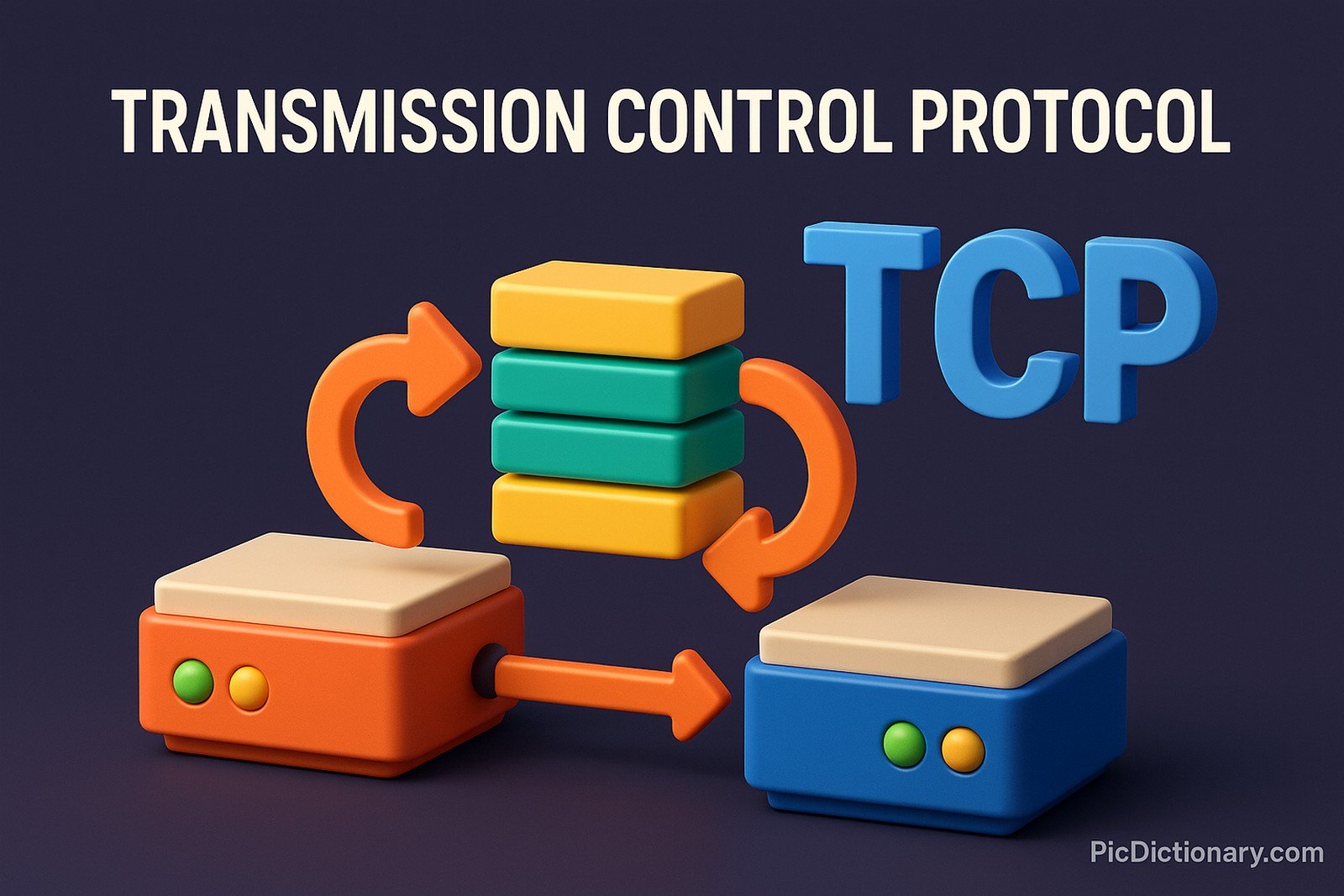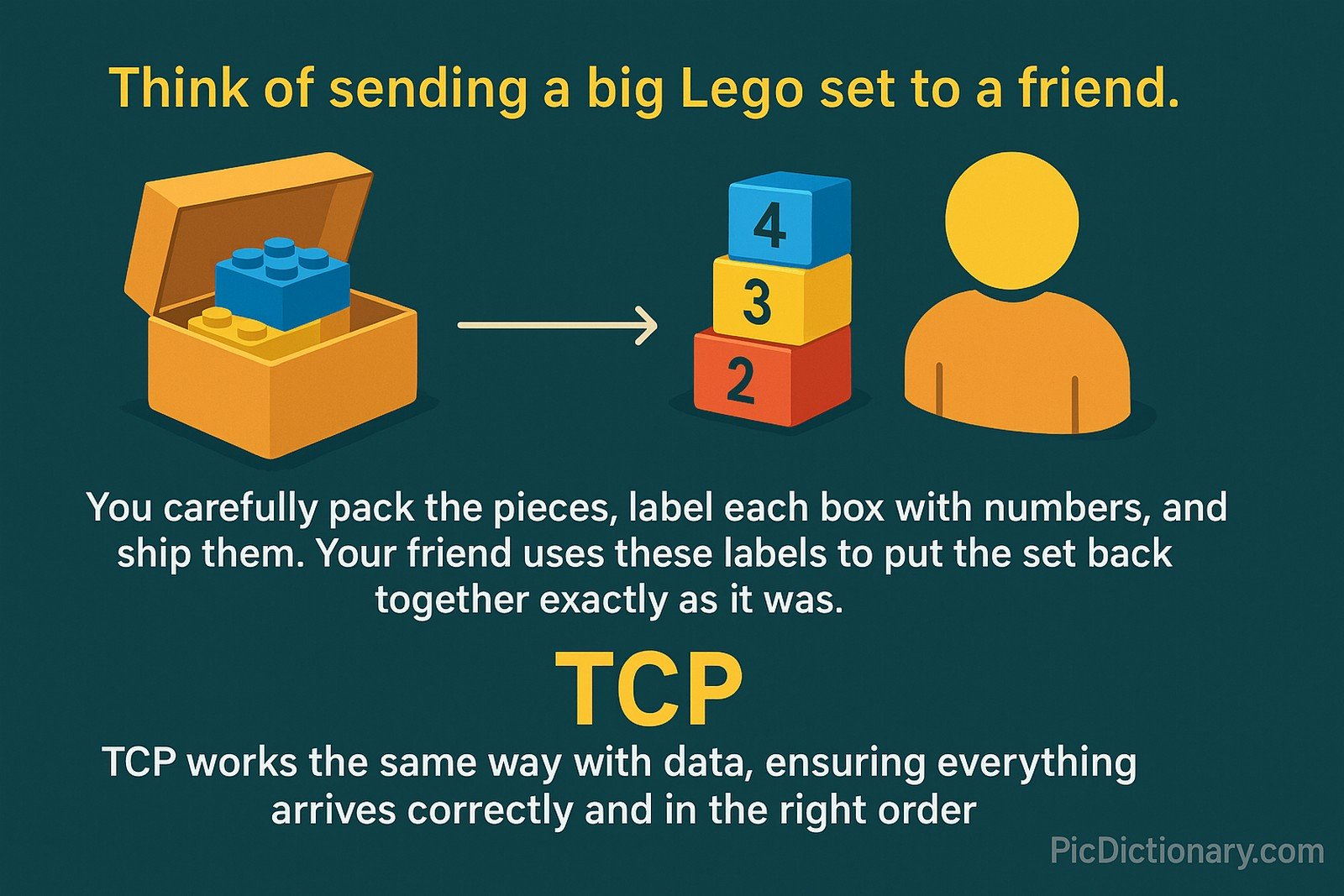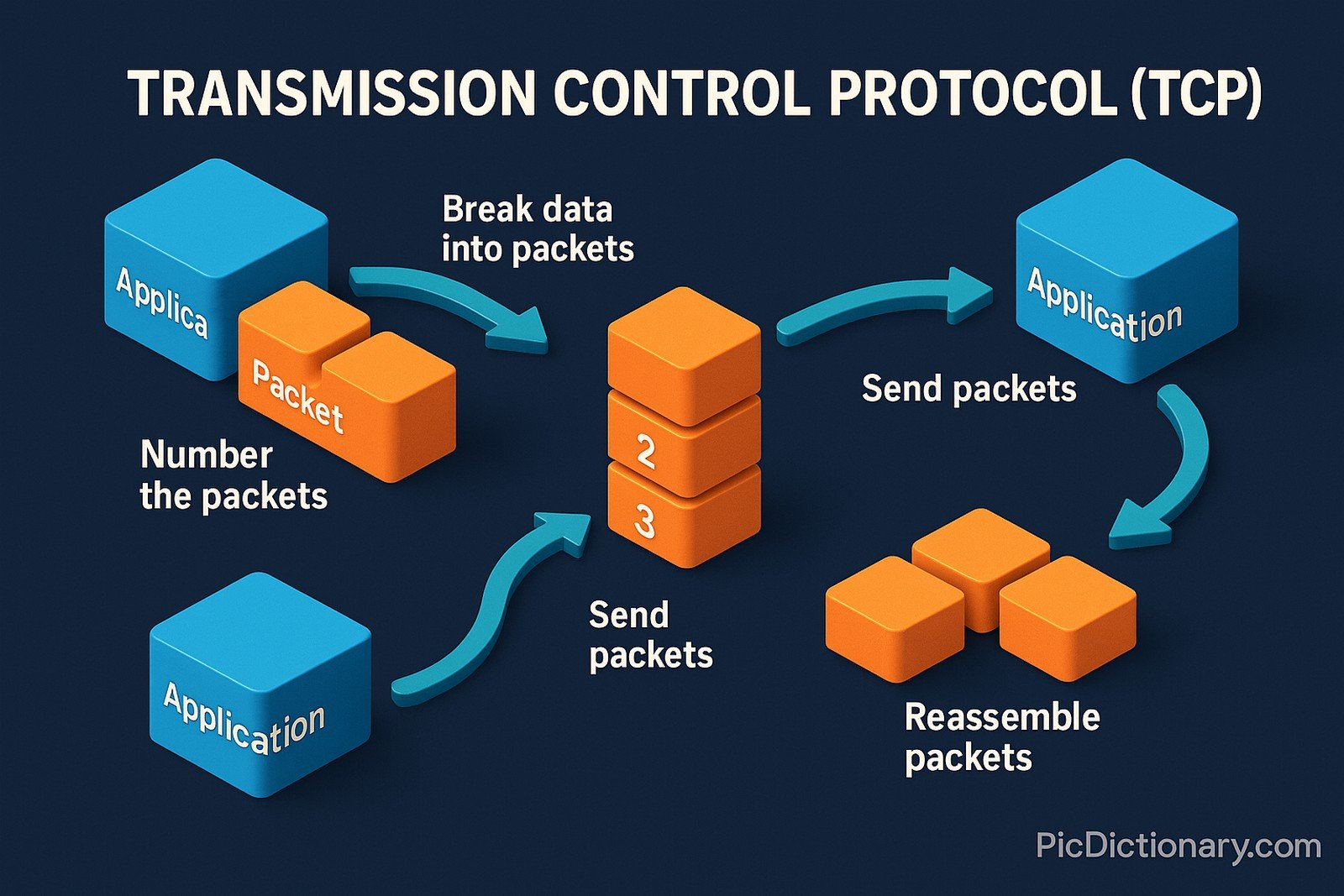Transmission Control Protocol (TCP)

Quick Navigation:
- Transmission Control Protocol (TCP) Definition
- Transmission Control Protocol (TCP) Explained Easy
- Transmission Control Protocol (TCP) Origin
- Transmission Control Protocol (TCP) Etymology
- Transmission Control Protocol (TCP) Usage Trends
- Transmission Control Protocol (TCP) Usage
- Transmission Control Protocol (TCP) Examples in Context
- Transmission Control Protocol (TCP) FAQ
- Transmission Control Protocol (TCP) Related Words
Transmission Control Protocol (TCP) Definition
Transmission Control Protocol (TCP) is a fundamental communication protocol in the Internet Protocol (IP) suite that enables reliable, ordered, and error-checked delivery of data between applications and devices across a network. TCP breaks data into packets, numbers them, sends them to the destination, and reassembles them in the correct order, ensuring complete and accurate data transfer.
Transmission Control Protocol (TCP) Explained Easy
Think of sending a big Lego set to a friend. You carefully pack the pieces, label each box with numbers, and ship them. Your friend uses these labels to put the set back together exactly as it was. TCP works the same way with data, ensuring everything arrives correctly and in the right order.
Transmission Control Protocol (TCP) Origin
TCP was first proposed in the early 1970s by Vint Cerf and Bob Kahn, designed as part of the foundation for what would become the modern internet. Their 1974 paper introduced the protocol as a way to establish reliable communication between connected computers.
Transmission Control Protocol (TCP) Etymology
The name comes from its core function: controlling the transmission of data and ensuring it is sent, received, and confirmed accurately.
Transmission Control Protocol (TCP) Usage Trends
TCP remains one of the most widely used protocols on the internet. Despite the rise of faster protocols like QUIC or UDP in certain applications, TCP continues to dominate for tasks requiring reliability, such as web browsing, file transfers, and email communications. Its resilience and reliability keep it a standard in networking.
Transmission Control Protocol (TCP) Usage
- Formal/Technical Tagging:
- Networking Protocol
- Internet Communication
- Reliable Data Transfer - Typical Collocations:
- "TCP connection"
- "TCP packet"
- "TCP/IP stack"
- "TCP handshake"
Transmission Control Protocol (TCP) Examples in Context
- When you load a webpage, your browser uses TCP to request and receive the content securely.
- Email services rely on TCP to send and receive messages without losing data.
- File transfers between servers are conducted via TCP to ensure that files arrive intact and complete.
Transmission Control Protocol (TCP) FAQ
- What is TCP?
TCP is a communication protocol that ensures reliable, ordered, and error-checked delivery of data between devices. - How does TCP work?
It breaks data into packets, numbers them, transmits them, and reassembles them at the destination in the correct order. - What is the TCP handshake?
The TCP handshake is a three-step process to establish a connection between two devices before data transmission. - Is TCP still relevant with new protocols emerging?
Yes, TCP remains essential for reliability in internet communications, especially for web browsing and secure data transfer. - What are TCP ports?
Ports are communication endpoints used by TCP to manage multiple simultaneous connections. - How does TCP differ from UDP?
TCP is connection-oriented and reliable, while UDP is connectionless and faster but less reliable. - Can TCP handle large files?
Yes, TCP efficiently manages large file transfers by breaking them into manageable packets. - Where is TCP used in daily life?
TCP is used in browsing the internet, sending emails, video conferencing, and online banking. - What are the limitations of TCP?
TCP can be slower due to overhead and may not perform well in high-latency or lossy networks. - Is TCP secure?
While TCP itself is not encrypted, it can be used with protocols like TLS to ensure secure data transmission.

Transmission Control Protocol (TCP) Related Words
- Categories/Topics:
- Networking
- Internet Protocols
- Data Communication
Did you know?
In 1983, TCP/IP was adopted as the standard for ARPANET, marking the official birth of the modern internet. This decision helped unify diverse networks and laid the groundwork for the global internet we use today.
PicDictionary.com is an online dictionary in pictures. If you have questions or suggestions, please reach out to us on WhatsApp or Twitter.Authors | Arjun Vishnu | @ArjunAndVishnu

I am Vishnu. I like AI, Linux, Single Board Computers, and Cloud Computing. I create the web & video content, and I also write for popular websites.
My younger brother, Arjun handles image & video editing. Together, we run a YouTube Channel that's focused on reviewing gadgets and explaining technology.



Comments powered by CComment